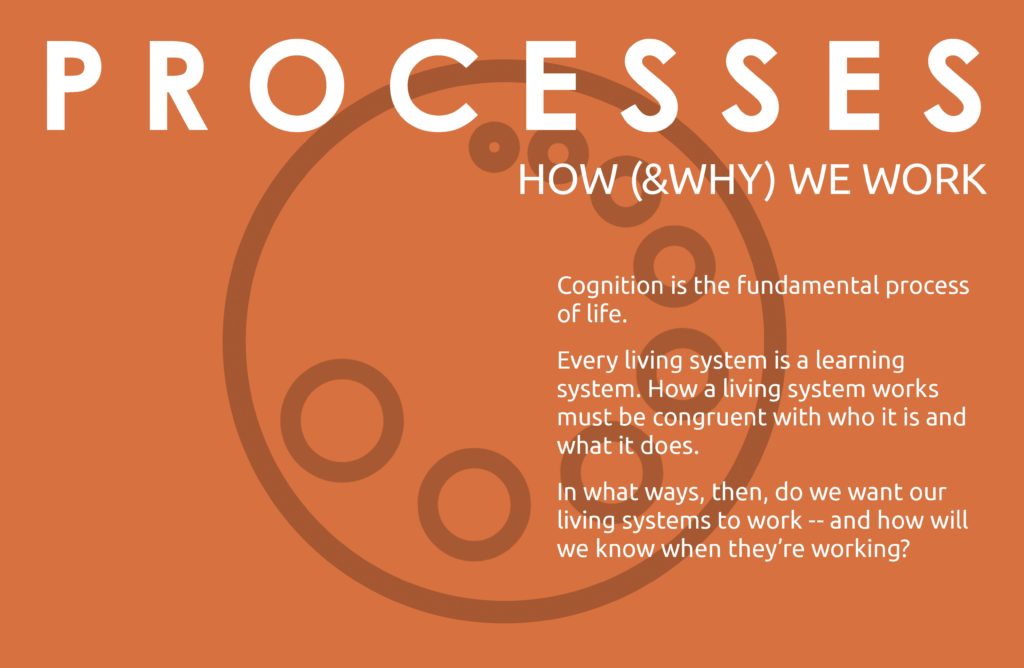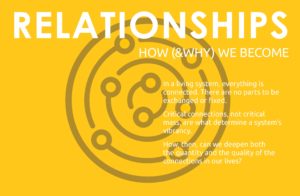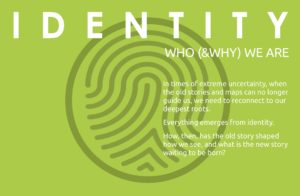The following is an excerpt from the forthcoming book, Living School: Learning from Nature How to Build a Better World, by Design.

As far as conundrums go, there aren’t many more complex than the one that was facing South Africa back in 1991.
A year earlier, South African president F.W. de Klerk had ended Nelson Mandela’s twenty-seven year prison sentence; begun legalizing every political party that opposed him; and set out in search of a way to negotiate a peaceful transfer from a racist past to a racially just future.
To help navigate such a landscape, de Klerk turned to an unlikely guide: Royal Dutch Shell, which for years had used the process of scenario planning — in which a set of carefully constructed, plausible stories are used to demonstrate different ways the future might unfold — to guide its own internal thinking.
Could the same process help a deeply divided nation envision its own possible futures, and contribute to creating a new reality in the land of apartheid?
As a member of the core facilitation team, Adam Kahane had his doubts. “Problems are tough because they are complex in three ways,” he says. “They are dynamically complex, which means that cause and effect are far apart in space and time, and so are hard to grasp from firsthand experience. They are generatively complex, which means that they are unfolding in unfamiliar and unpredictable ways. And they are socially complex, which means that the people involved see things very differently, and so the problems become polarized and stuck.”
The problem is that we can’t solve complex problems unless we change the ways we talk and listen. “Our most common way of talking is telling. And our most common way of listening is not listening: listening only to our own talking, not to others. But a complex problem can only be solved peacefully if the people who are part of the problem work together creatively to understand their situation and to improve it.”
And so, over the better part of a year, Kahane and his team worked with a diverse and representative group of twenty-two South Africans. They “breathed in” — observing the world as broadly and carefully as they could, and looking for patterns across what they saw and heard. They “breathed out” — debating with one another what they were noticing, and what it augured. They talked about all the things that might happen, as opposed merely to what they each wanted to see. And then, eventually, they shared these observations with their fellow countrymen and women in the form of four simple stories — one of which, Flight of the Flamingos, imagined a future in which the conditions were created to allow everyone, white and black, to rise slowly and together.
In a pre-Internet age, the team relied on analog means to share the stories, from inserting a 25-page booklet into South Africa’s national newspaper to conducting more than 100 workshops across the country. But because the stories were simple, compelling, and illustrative of the country’s possible paths, they provided a common language for the shared aspirations of a deeply divided people. And, despite its myriad problems since, South Africa’s transition of power was indeed peaceful, hopeful, and galvanizing.
“The way we talk and listen expresses our relationship with the world,” Kahane explained. Consequently, the essence of the scenario process in South Africa was “that a small group of deeply committed leaders, representing a cross-section of a society that the whole world considered irretrievably stuck, had sat down together to talk broadly and profoundly about what was going on and what should be done. More than that, they had not talked about what other people should do to advance some parochial agenda, but what they and their colleagues and their fellow citizens had to do in order to create a better future for everybody. They saw themselves as part of — not apart from — the problem they were trying to solve. They believed they could actively shape their future. And they understood that one reason the future cannot be predicted is that it can be influenced.
“If we want to change the systems we are a part of,” Kahane concluded, “we must first see and change ourselves.”
This, too, is the lesson of the natural world.
“There is an inherent exuberance and flow to the processes by which living systems continuously recreate and sustain themselves,” explains Stephanie Pace-Marshall, who modeled the Illinois Math & Sciences Academy on the seven principles of living systems. “They are neither linear nor formulaic. Life is simply free to be and become. Processes are both the creative (novelty-generating) and self-regulatory (order-creating) ways our systems explore possibilities, measure and monitor achievement, generate and transmit information, and get their work done. They are the known and observable behaviors, observations and rules by which a system achieves and advances its learning purpose and objectives.”
Margaret Wheatley puts it more succinctly. “Who the organization is (its identity) is inextricably connected to how it is (its processes of learning and change).”
How, then, should we want our living systems to work — and how will we know when they are?
By this point, we hope it has become clear that the work to create a living school must always begin with the three fundamental seeds of growth in a living system: establishing a clear sense of individual and collective identity; facilitating an open exchange of any and all relevant information; and supporting a deep investment in relationships. These conditions are what allow living systems to begin planting seeds of change, through the property of emergence.
To remain vital and alive, however, a living school must also design its own seeds for regeneration: it must notice the patterns that emerge over time; it must implement its own processes for creation; and it must erect its own structures for operation — although not in the way we typically think about such things.
In a living system, for example — as opposed to a traditional hierarchy– structures are the last thing you add, instead of the first. Order, not control, is what marks systemwide health. And the relationship between the processes in a system and the purpose that animates it is so interwoven that, in the words of legendary activist Saul Alinsky, “it is impossible to mark where one leaves off and the other begins, or which is which. Process is really purpose.”
In this sense, the central design challenge of anyone who hopes to build a living school is the same as the one faced by Mother Nature: treating change as an essential source of creativity — not something to be resisted or feared.
“One of the most important roles we can play individually and collectively is to create an opening, or to ‘listen’ to the implicate order unfolding, and then to create dreams, visions, and stories that we sense at our center want to happen,” writes Joseph Jaworski, the man who led Shell’s scenario planning in South Africa.
That’s what the processes of a living system should be designed to facilitate.
When they are, as evolutionary biologist Elisabet Sahtouris explains, a spirit of interdependence takes root, which is the mark of a mature living system. “Young immature species are the ones that grab as much territory and resources as they can,” she explains, “multiplying as fast as they can. But the process of negotiations with other species matures them, thus maturing entire ecosystems. Rainforests that have evolved over millions of years are a good example. No species is in charge — the system’s leadership is distributed among all species, all knowing their part in the dance, all cooperating in mutual consistency.”
Indeed, as you’ll see in the stories that follow, adopting processes that are both emergent and egalitarian is what helps form a truly ecological culture.
In the science of slime mold, we see one of Nature’s most remarkable adaptive processes: a single-celled organism and soil-dwelling amoeba that, when food is scarce, literally combines forces with its neighbors to become a multicellular, moving mass.
In the art of Andy Goldsworthy, we see sculptures that are always designed to be ephemeral as a reminder of the inevitability of decay, and the temporariness of all that is truly alive.
In the words of teenage climate activist Greta Thunberg, we hear an urgent plea for a different set of processes that can guide life on earth and restore a balance between us and our fellow inhabitants.
And in the work of Crosstown High in Memphis, we see what it looks and feels like when that thing we call “school,” and the processes by which we learn, are meant to occur as much outside the building as inside any classroom.
In each instance, what we find is evidence of the creative energy that gets unleashed when process and purpose are aligned. As psychology professor Mihaly Csikszentmihalyi explains in his classic book, Flow, “The optimal state of inner experience is one in which there is order in consciousness.“
And yet, as Paolo Freire pointed out, our work to find the processes that can provide a sense of order — to the world, and in ourselves — is never done. “I think that one of the best ways for us to work as human beings is not only to know that we are uncompleted beings but to assume the incompleteness.
“We have to become inserted in a permanent process of searching,” Freire writes. “It means that keeping curiosity is absolutely indispensable for us to continue to be or to become.”


Recent Comments